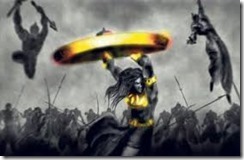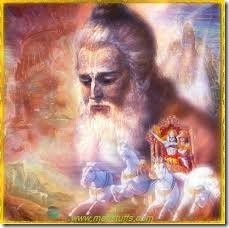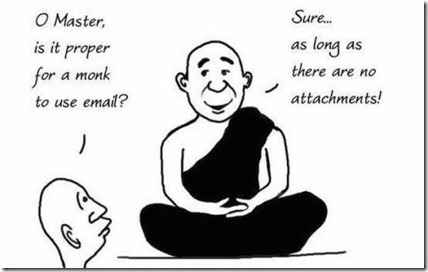Shinde Sweety's Blog - Posts Tagged "mahabharata"
Journey of my novel - I
“I feel pregnant!”
Truly, there is no other way to etch my feelings as my debut novel ‘Arjun: Without A Doubt’ inches closer home to publication.
I hold triplets within my womb. The idealist, the flame and the enigma.
They poured words into my pen, I put words onto their lips. They have morphed
and transformed. Multiple times.
“Its high time, Lady, set us free.” the fiery one insists, her imperial finger tapping on crossed arms. The patient one leans back - he knows he can outwait Eternity. The enigmatic one smiles, as always – he knows he orchestrates the whole drama.
Just hold on a while longer, my beloveds!


Truly, there is no other way to etch my feelings as my debut novel ‘Arjun: Without A Doubt’ inches closer home to publication.

I hold triplets within my womb. The idealist, the flame and the enigma.
They poured words into my pen, I put words onto their lips. They have morphed
and transformed. Multiple times.
“Its high time, Lady, set us free.” the fiery one insists, her imperial finger tapping on crossed arms. The patient one leans back - he knows he can outwait Eternity. The enigmatic one smiles, as always – he knows he orchestrates the whole drama.
Just hold on a while longer, my beloveds!



Published on January 13, 2015 09:29
•
Tags:
arjun, draupadi, krishn, mahabharata
Book cover image- why, what, how?
5 seconds for book cover and 15 seconds for back page text!
That is the average attention span to entice a book reader. That is the time span needed to convert a ‘maybe book buyer’ into a ‘definitely interested book buyer’.
This is my story, my exciting journey – as my Cover Design Artist and myself made a memorable foray into concepts, ideas and colors.
Premise & target audience
‘Aim high’ – I thought hopefully, when asked to state my target audience. Indians, NRIs, pan-Earth Mythology buffs, Aliens…
Mahabharata may be an Indian Epic, but its emotions, its philosophy and its characters are rich & relevant across religion, region, language and Time.
My book focuses on 3 protagonists of Mahabharata - Arjun, Draupadi and Krishn.
My book blurb had to condense a 96,000 word manuscript into 132 words.
My book cover had to complement those 132 words in a vivid 5 second vision. Easy , huh?
I found the perfect artist to capture my dream idea in Champa Srinivas, my exquisite Cover Designer. She is an Architect cum artist who loves to ‘capture the beauty of aesthetic spaces and colors’.
Concept, symbols, colors, ideas.
Symbolism: My 3 protagonists:
1] Arjun – The ace archer and superlative warrior.
2] Draupadi – his feisty Queen.
3] Krishn – God who walked Earth in human form.
Their symbols: Arrow, Blue Lotus and Peacock feather respectively.
Concept behind symbolism:
Arrow was a no-brainer, given Arjun’s authoritative excellence in archery.
Blue lotus (for Draupadi) , since she possessed the inborn fragrance of a blue lotus.
We tossed our coin over Krishn’s symbols – the flute (artistic, melodious, poetic) or Sudarshan chakra (his discus weapon) or peacock feather (his flamboyant characteristic head gear) – before finalizing the latter.
Color palette:
Silver Arrow : ‘Arjun’ in Sanskrit = spotless/luminous as silver; just like its sound-alike ‘Argentum’ in Latin. {Such an amazing coincidence!}
Sleek and honed like Arjun’s razor sharp focus. Yet – humble and understated in comparison to his 2 soul mates.
Blue Lotus : Apart from the fragrance factor, Draupadi was a dusky beauty with lustrous

Published on February 09, 2015 04:31
•
Tags:
arjun, book-cover-design, color-scheme, concept, ideas, mahabharata
Abhimanyu's womb training - proof of Garbh Sanskaar
Abhimanyu heard words, he absorbed them, he remembered them forever.
Abhimanyu heard them in-utero, within Subhadra’s womb.

Was Vyas bluffing in his narration of Mahabharata? How can a formative mass of cells retain memory?
VYAS was NOT bluffing – Vyas was (as many other Indian thinkers) just miles and miles ahead of his times.
Research has now discovered, acknowledged and put into practice the knowledge that VYAS already possessed 5000 years ago in Mahabharata.
Son of Arjun and nephew of Krishn. This illustrious warrior lived a mere 16 years on Earth, but remains an icon of courage.
As per Mahabharata, he listened to Krishn (in some version, Arjun’s) description of Chakravyuh – a military formation as narrated to his mother Subhadra. However, as Subhadra dozed off halfway, he could only hear the secret to enter Chakravyuh, but not way out of it.
On day 13 of Kurukshetra war, Abhimanyu muscled his way into the dreaded Chakravyuh, but was entrapped within. He fought relentlessly, using every weapon he possessed – even using his chariot wheel to launch an attack. Ultimately, he faced a tragic end, being pulverised to death as he lay unconscious with fatigue.
The womb is a protective shell, the placenta allows a mixture of mother and baby blood. The direct vibrations from diaphragm (it vibrates when mother speaks) amplify sound and relay it to fetus. Thus, words spoken by parents are heard by baby.
Garbh sanskaar or ‘womb training’ relates to this phenomenon, whereby the mother’s emotions, desires, knowledge and behavioral traits get relayed across to baby and affect the baby’s overall development.
1] LANGUAGE: Newborns can actually tell the difference between their mother’s NATIVE tongue and FOREIGN languages.
“The brains do not wait for birth to start absorbing information,” says study author Patricia K. Kuhl, PhD, University of Washington in Seattle. Her findings appear in the journal Acta Paediatrica.
2] Positive effects on fetal BRAIN DEVELOPMENT.
3] Reduces STRESS levels during pregnancy (Yes, even babies can have stress!)
4] Improves baby’s sleeping habits
5] Provides a wonderful BONDING opportunity in utero.
6] Music appreciation increases.
Indian doctors now recommend recitation of Bhagwad Gita, Gayatri Mantra and Classical music to all pregnant mothers.
All Indians should be mighty proud of Vyas’s amazing foresight.
Does your gynecologist/ pediatrician encourage conversations between a pregnant woman and her baby?
Do you believe Mythology is a Reality - a History?
Abhimanyu heard them in-utero, within Subhadra’s womb.

Was Vyas bluffing in his narration of Mahabharata? How can a formative mass of cells retain memory?
VYAS was NOT bluffing – Vyas was (as many other Indian thinkers) just miles and miles ahead of his times.
Research has now discovered, acknowledged and put into practice the knowledge that VYAS already possessed 5000 years ago in Mahabharata.
Abhimanyu:
Son of Arjun and nephew of Krishn. This illustrious warrior lived a mere 16 years on Earth, but remains an icon of courage.
As per Mahabharata, he listened to Krishn (in some version, Arjun’s) description of Chakravyuh – a military formation as narrated to his mother Subhadra. However, as Subhadra dozed off halfway, he could only hear the secret to enter Chakravyuh, but not way out of it.

On day 13 of Kurukshetra war, Abhimanyu muscled his way into the dreaded Chakravyuh, but was entrapped within. He fought relentlessly, using every weapon he possessed – even using his chariot wheel to launch an attack. Ultimately, he faced a tragic end, being pulverised to death as he lay unconscious with fatigue.
Womb as Mother-child nexus
The womb is a protective shell, the placenta allows a mixture of mother and baby blood. The direct vibrations from diaphragm (it vibrates when mother speaks) amplify sound and relay it to fetus. Thus, words spoken by parents are heard by baby.
Garbh sanskaar or ‘womb training’ relates to this phenomenon, whereby the mother’s emotions, desires, knowledge and behavioral traits get relayed across to baby and affect the baby’s overall development.

What are positive benefits to baby?
1] LANGUAGE: Newborns can actually tell the difference between their mother’s NATIVE tongue and FOREIGN languages.
“The brains do not wait for birth to start absorbing information,” says study author Patricia K. Kuhl, PhD, University of Washington in Seattle. Her findings appear in the journal Acta Paediatrica.
2] Positive effects on fetal BRAIN DEVELOPMENT.
3] Reduces STRESS levels during pregnancy (Yes, even babies can have stress!)
4] Improves baby’s sleeping habits
5] Provides a wonderful BONDING opportunity in utero.
6] Music appreciation increases.
Indian doctors now recommend recitation of Bhagwad Gita, Gayatri Mantra and Classical music to all pregnant mothers.
All Indians should be mighty proud of Vyas’s amazing foresight.

Does your gynecologist/ pediatrician encourage conversations between a pregnant woman and her baby?
Do you believe Mythology is a Reality - a History?
Published on May 09, 2015 11:19
•
Tags:
abhimanyu, chakravyuh, garbh, mahabharata, vyas, womb-training
Your touch brings me alive...
Ever bestowed a title or name upon your possessions? Ever felt that your non-living possessions have mood swings and emotions?
A house, a car, a laptop gleaming in the showcase are mere objects. Once they belong to you, they get kick started into life. I do believe our possessions inherit vibes from us, just as pets do. They attune themselves to our touch, our habits, our fingers. They cling, they adopt, they mould.
Going even farther back, remember Devdatta and Panchajanya, the celestial conch shells of Arjun-Krishn. Gandiva and Sudarshan - the divine bow and divine discus.


In Mahabharata era , weapons and conch shells were extremely personified and personalized objects. They were given elaborate names just as we name a child. They remained private, precious and intensely personal possessions. Never did Krishn lust for Gandiva or Arjun for Sudarshanchakra.
In the midst of this tender attachment to weapons, Krishn also advocated detachment. Responsible detachment, not mere indifference.. Recycling is the universal law. Even human bodies are meant for recycle.
The modern We can murder to grab the 'latest' iPhone. Today's owned object is tossed aside tomorrow.
Use and throw. Objects, relations, people ...
How does one tread the fine tightrope between attachment and detachment?

A house, a car, a laptop gleaming in the showcase are mere objects. Once they belong to you, they get kick started into life. I do believe our possessions inherit vibes from us, just as pets do. They attune themselves to our touch, our habits, our fingers. They cling, they adopt, they mould.
Going even farther back, remember Devdatta and Panchajanya, the celestial conch shells of Arjun-Krishn. Gandiva and Sudarshan - the divine bow and divine discus.


In Mahabharata era , weapons and conch shells were extremely personified and personalized objects. They were given elaborate names just as we name a child. They remained private, precious and intensely personal possessions. Never did Krishn lust for Gandiva or Arjun for Sudarshanchakra.
In the midst of this tender attachment to weapons, Krishn also advocated detachment. Responsible detachment, not mere indifference.. Recycling is the universal law. Even human bodies are meant for recycle.
The modern We can murder to grab the 'latest' iPhone. Today's owned object is tossed aside tomorrow.
Use and throw. Objects, relations, people ...
How does one tread the fine tightrope between attachment and detachment?

Published on October 22, 2015 04:29
•
Tags:
attachment, detachment, gandiva, mahabharata, personalized-weapons, sudarshan



